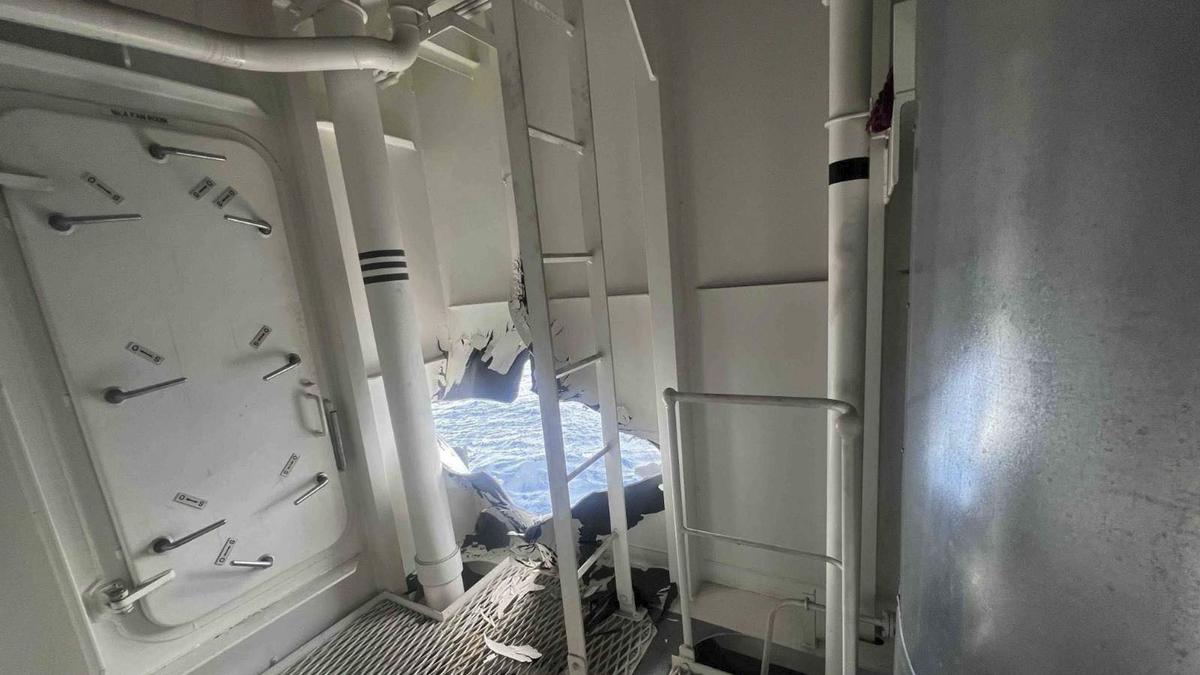The South China Sea has long been a point of contention between China and its neighboring countries. Recent incidents, such as the alleged ramming of a Philippine coast guard vessel by a Chinese vessel, have once again heightened tensions in the region. This incident highlights the complex geopolitical dynamics surrounding the South China Sea, particularly the territorial claims and disputes between China and the Philippines.
Territorial Disputes and Claims
The South China Sea, a strategically important body of water rich in natural resources and vital for maritime trade, has been a source of contention for decades. China asserts its claim over almost the entire South China Sea based on its historical “nine-dash line,” a concept that lacks legal basis in international law. This claim overlaps with territorial claims by Vietnam, Malaysia, Brunei, the Philippines, and Taiwan.
The Philippines’ Perspective
The Philippines asserts its sovereignty over several islands and reefs within the South China Sea, including Sabina Shoal, which was the site of the recent incident. The Philippines considers Sabina Shoal to be part of its Exclusive Economic Zone (EEZ), a region within which it has the right to explore and exploit natural resources. The Philippine government maintains that China’s actions, such as the alleged ramming of the coast guard vessel, are an attempt to intimidate and violate its sovereignty.
China’s Perspective
China rejects the Philippines’ claims and argues that Sabina Shoal is part of its territory. Beijing insists that its presence in the South China Sea is justified by its historical claims and that it is exercising its sovereign rights to protect its maritime interests. China’s actions in the South China Sea, including the deployment of coast guard vessels and construction of artificial islands, have been criticized by other countries and international organizations. China views these actions as essential for safeguarding its national security and promoting regional stability.
The Recent Incident and its Implications
The recent incident involving the alleged ramming of a Philippine coast guard vessel by a Chinese vessel raises significant concerns about the potential for escalation in the South China Sea. The release of footage showing the Chinese vessel approaching and ramming the Philippine ship has fueled tensions and has prompted calls for international intervention.
Increased Tensions and Concerns
The incident is just one in a string of similar encounters between Chinese and Philippine coast guard vessels in recent weeks. These escalating incidents are a stark reminder of the fragility of peace and stability in the South China Sea and could lead to unintended consequences, such as accidental clashes or even armed conflict.
International Reactions
The incident has drawn widespread condemnation from international actors. The United States has expressed concern over China’s actions and has reaffirmed its commitment to supporting the Philippines in its defense of its sovereignty. Other countries and regional organizations have also called for de-escalation and have urged China to respect international law and the sovereignty of its neighbors.
Diplomatic and Legal Frameworks
Resolving the territorial disputes in the South China Sea will require a sustained commitment to dialogue and diplomacy.
The Importance of Diplomacy and Dialogue
International law, particularly the United Nations Convention on the Law of the Sea (UNCLOS), provides a framework for addressing maritime disputes. UNCLOS, to which both China and the Philippines are signatories, defines territorial waters, exclusive economic zones, and continental shelves, which are critical for understanding and resolving territorial claims.
Legal Basis and International Law
The South China Sea issue has also been brought before the Permanent Court of Arbitration (PCA). In 2016, the PCA ruled against China’s “nine-dash line” claim, concluding that it had no legal basis under UNCLOS. Despite this ruling, China continues to maintain its claims and reject the court’s decision.
Looking Forward: Towards a Peaceful Resolution
Navigating the complexities of the South China Sea requires a balanced and diplomatic approach. While China and the Philippines have been engaged in negotiations and talks in recent years, resolving the territorial disputes and ensuring stability in the region requires a multifaceted approach that prioritizes peaceful diplomacy, legal frameworks, and respect for international law.
The Need for Restraint and De-escalation
It is crucial that both countries exercise restraint and avoid actions that could escalate tensions. Mutual dialogue and cooperation are essential for establishing confidence-building measures and creating an environment conducive to resolving the South China Sea dispute peacefully.
Collaboration and International Cooperation
Further collaboration and engagement by regional and international actors is also essential. Countries in the region should continue to work together through multilateral frameworks, such as ASEAN, to address common challenges and promote cooperation in the South China Sea. The international community should also support diplomatic efforts to find a peaceful solution that upholds international law and respects the sovereignty of all parties.
Takeaway Points
- The South China Sea remains a volatile region with complex territorial disputes.
- The recent incident between Chinese and Philippine coast guard vessels underscores the importance of dialogue and diplomacy.
- International law and legal frameworks, such as UNCLOS, provide a foundation for resolving disputes.
- Maintaining restraint and pursuing peaceful solutions is essential for preventing escalation in the South China Sea.
- Regional and international cooperation are critical to promoting stability and resolving disputes in a peaceful and just manner.









